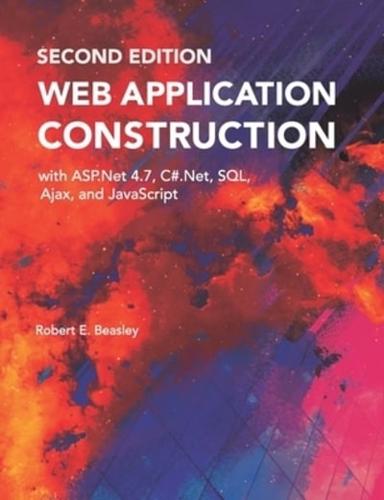Publisher's Synopsis
Audience
Web Application Construction (WAC) is intended for use by college or university freshmen, sophomores, juniors, seniors, or graduate students who are enrolled in a one-semester course or two-semester sequence of courses in Web application development and who are majoring or minoring in software engineering, computer science, applied computer science, computer information systems, business information systems, information technology, or any other area in which software development is the focus.
Organization
WAC is designed to help the reader master one of the most effective and widely-used technology stacks for developing modern Web applications-ASP.Net, C#.Net, SQL, Ajax, and JavaScript.
Part I - Overview
1 Web Application Construction
Part II - Single-Page Web Application Construction
2 Page Construction
3 Basic Server Controls
4 More Server Controls
5 Data Validation Controls
Part III - C# Programming
6 Assignment Operations
7 Conversion Operations
8 Control Operations
9 String Operations
10 Arithmetic Operations
11 Date and Time Operations
12 Array Operations
13 Collection Operations
14 File System Operations
15 Custom C# Classes
Part IV - Multiple-Page Web Application Construction
16 State Maintenance
17 Master Pages
18 Themes
19 Navigation
Part V - Database Connectivity
20 Database Design, SQL, and Data Binding
21 Single-Row Database Table Maintenance
22 Multiple-Row Database Table Maintenance
23 Code-Behind Database Operations
Part VI - Additional Functionality
24 Email Messaging
25 Ajax Programming
26 JavaScript Programming
Features
Class Focus
WAC includes a class diagram for each class discussed in the text. Each class diagram articulates some of the most important properties, methods, and events of the class. For those properties, methods, and events that are not included in the class diagram, a link to the official class reference is provided.
Visual Orientation
Since a large amount of information can be represented in a relatively small space using a table, and since a picture is worth a thousand words, the text includes a significant number of tables and figures. These tables and figures are designed in such a way that the instructor can organize entire class lectures/discussions around them. In addition, since many students in the computing field are visual or spatial learners, the copious use of tables and figures can be especially beneficial to them.
Real-Life Examples
A significant proportion of the examples in the text are drawn from the real-life experiences of the author's own software development practice that began in 1987.
Clear-Minded, Consistent, and Concise Prose
Every effort has been made to present concepts clearly and logically, utilize consistent language and terminology across all chapters and topics, and articulate concepts fully yet concisely. With regard to conciseness, a common complaint of many computing students is that their textbooks contain far more text than is necessary to describe concepts that could be expressed more succinctly. They also complain that their textbooks repeat themselves entirely too often. Great care has been taken to ensure that the text contains concise prose and that it does not repeat concepts unnecessarily.
Accessible Language
Although the subject matter of this book is highly technical and specialized, trendy and/or arcane language that is inaccessible to the average computing student is either clearly defined or replaced in favor of clear and generalizable terminology.
























